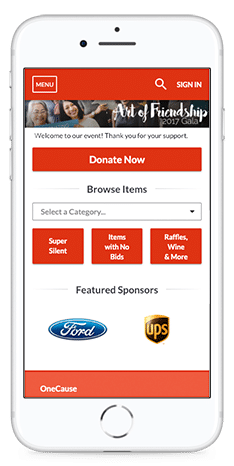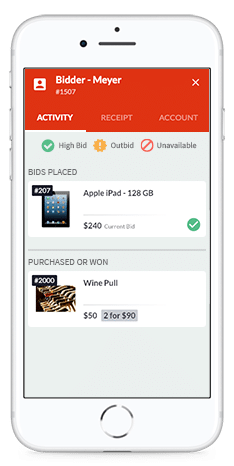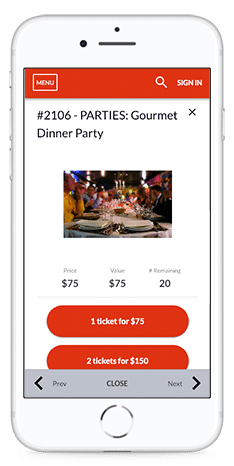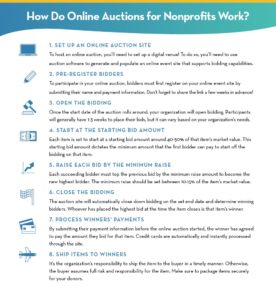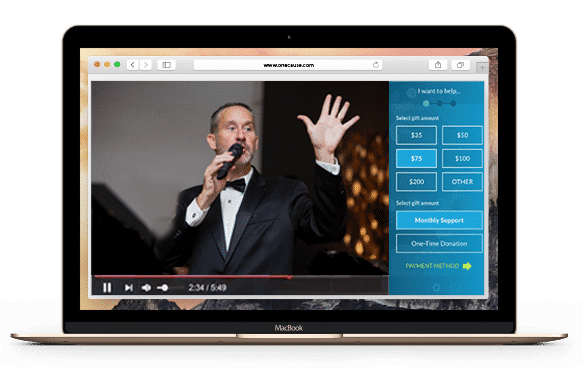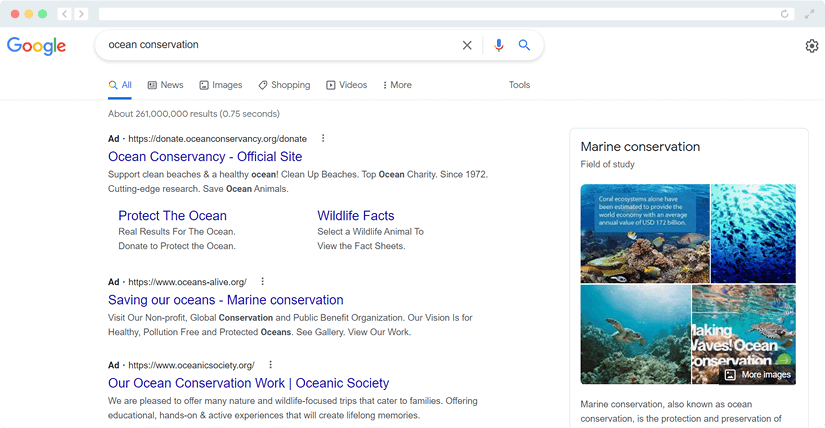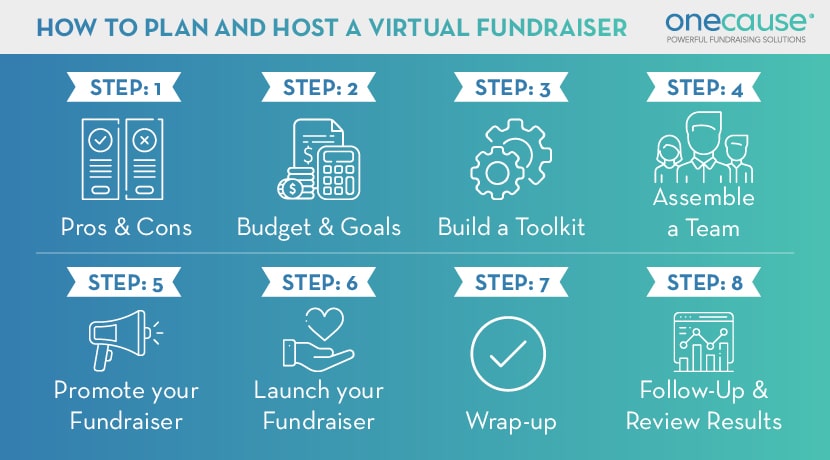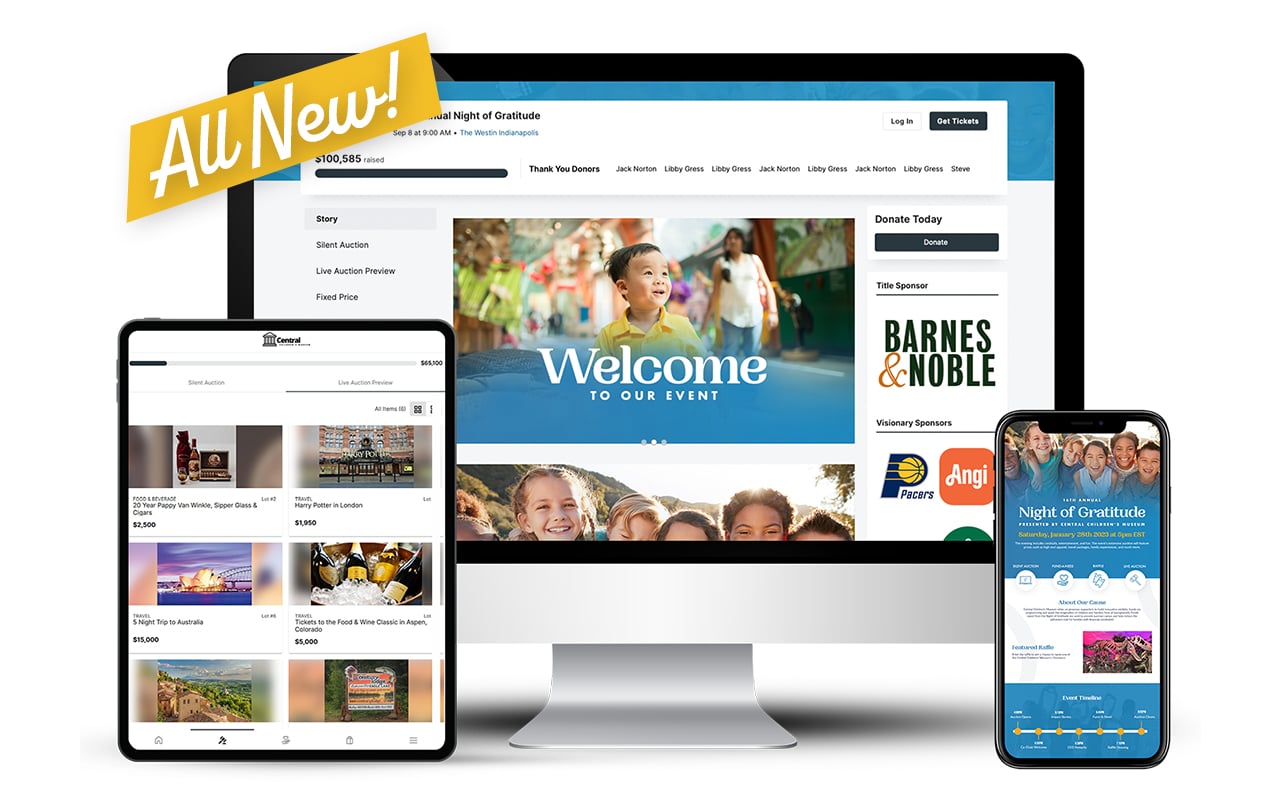Virtual Fundraising: Ideas, Steps, Tools, & Resources
Virtual fundraising is a staple in the nonprofit sector. With its flexibility, cost-friendliness, and ability to drive a high ROI, virtual fundraising has helped nonprofits persevere in uncertain times, especially throughout the pandemic when in-person events weren’t possible.
Although it’s been nearly three years since the pandemic began, there is still immense value in hosting virtual fundraisers. In fact, 33% of donors prefer to engage completely or mostly virtually with their favorite organizations. In 2023, it can be expected that this trend favoring virtual fundraising will remain strong.
If you haven’t hosted a virtual fundraising campaign before, taking the fundraising process online may seem overwhelming. However, the right virtual fundraising platform can streamline the entire planning and execution process, giving your organization everything it needs to host and manage its next event.
To help you lead an effective online fundraiser, we’ve put together this go-to guide to thriving in the virtual world. We’ll cover:
- Virtual Fundraising FAQ
- Virtual Fundraising Ideas for Nonprofits
- How to Plan and Host a Virtual Fundraiser
- Building a Virtual Fundraising Toolkit
Ready to dive in? You’ll be engaging wider online audiences and generating more support for your mission in no time.
Virtual Fundraising FAQ
Before covering specific strategies and virtual fundraising ideas, it’s helpful to start with the essentials. These are a few commonly asked questions that nonprofits have as they begin exploring the world of virtual fundraising:
Frequently Asked Questions
| What is virtual fundraising? | Virtual fundraising involves any type of nonprofit campaign or event that takes place entirely online, allowing supporters to engage with your cause from anywhere. |
| What are the benefits of virtual fundraising? | The ability to engage donors from anywhere is a major benefit for nonprofits, especially amid social distancing guidelines. Virtual fundraising also allows you to offer brand new engagement opportunities to donors, keeping them excited to stay involved. Plus, virtual events like online auctions are often more cost-effective than traditional in-person events. |
| How can you maximize the visibility of your virtual fundraising campaigns? | Digital marketing will be the primary way you get your online campaigns in front of donors and inspire people to contribute. By leveraging your website, social media, email, and other digital communication platforms, you can advertise your virtual fundraisers. Then, you can leverage optimization strategies and tools (such as Google Ad Grants) to amplify your campaigns and get in touch with even more donors. |
| What do you need to host a virtual fundraising campaign? | Virtual fundraising naturally requires technology to generate results and engage audiences. You'll need online fundraising and livestreaming tools at a minimum. For the best results, use all-in-one virtual fundraising software. This will help prevent the need to cobble together a piecemeal solution from multiple platforms. |
| Who can conduct virtual fundraising? | Any organization can get started with virtual fundraising! In the past, the need for advanced technology made these campaigns and events feasible only for nonprofits with very large budgets. Today, however, virtual fundraising software is more accessible than ever, with a wide range of solutions available for organizations of all sizes. |
| What are different types of virtual fundraising campaigns? | Virtual fundraising is an extremely flexible strategy, so it's easy to adapt all kinds of campaigns and events to take place online. We'll cover types of campaigns, virtual fundraising ideas, and examples in a section below. |
Virtual Fundraising Ideas for Nonprofits
Let’s walk through some of the most effective types of virtual fundraising campaigns and events for nonprofits. Each of these ideas is highly flexible and can be adapted for any audience, mission, or budget.
Virtual Auctions
Virtual auctions, which function as a kind of digital silent auction, are engaging virtual fundraisers designed to maximize support. To run an online auction, nonprofits use mobile bidding tools and online auction software to incorporate gamification elements and facilitate bids. The right virtual fundraising platform makes it easy to:
- Generate an event website to serve as the central virtual “venue”
- Create an online auction item catalog with descriptions, starting bids, and photos
- Register bidders for the auction, collect payment info, and explain the bidding process
- Enable remote bidding from desktop computers or mobile devices
- Facilitate and track virtual bids on your items
- Automatically process invoices and credit card payments
- Analyze your event’s performance and generate data reports
- Incorporate sponsor shout-outs into your event’s digital materials
Virtual auctions can help nonprofits raise a lot of money online. Not only are they typically more cost-effective to plan than traditional live auctions, but they’re also more accessible to broader audiences who can sign up and bid remotely. These benefits can greatly increase the fundraising potential and ROI of your virtual auction.
Plus, mobile bidding tools make it easy to incorporate virtual auction elements into any other type of virtual event. This is a great strategy to raise even more from your online campaigns and engagement opportunities.
To learn more, check out our complete guide to planning and running a virtual auction.
Or, use this handy explainer to learn all of the core steps of planning and hosting a virtual auction for your nonprofit:
Success Story!
The American Red Cross of Michigan raised over $190,000 by quickly organizing a virtual auction and reaching their chapters and supporters across the entire state.
Virtual Fundraising Events
A wide variety of events that have traditionally been held in-person can be moved online, including auctions, galas, and community gatherings. As a result, your nonprofit can save significant funds that would otherwise go towards reserving a space, booking catering, and other miscellaneous costs, ultimately allowing you to drive a higher ROI.
Use dedicated virtual event and video streaming software to handle all of your planning and management tasks in one place. This will greatly reduce the logistical challenges of adapting your plans to the virtual sphere.
If you’ve already made the move to online events (or are planning your first online event), study up with our quick guide to hosting a flawless virtual event.
Virtual Peer-to-Peer Fundraising
Peer-to-peer fundraising is an effective way to amp up support and create strong relationships with your most loyal supporters. These campaigns can work as a standalone fundraiser, or you can easily incorporate a peer-to-peer element into any virtual event to drive additional engagement. We have a few favorite virtual peer-to-peer fundraising tactics, including:
- Viral challenges. Encourage participants to sign up for your unique challenges and spread the word online. Right to Play generated nearly 5 million social media impressions with their challenge campaign!
- Ambassador fundraising. This tactic is perfect for promoting your virtual events like auctions and galas. Recruit high-powered community ambassadors to generate excitement and secure plenty of registrations.
- Virtual walks and runs. Although everyone will participate separately, these campaigns work the same as traditional walks and runs. Participants secure pledges, log their times, and have fun all online while supporting your mission!
To learn more about virtual peer-to-peer fundraising campaigns, read our complete list of best practices.
Success Story!
The Boys and Girls Club of Greater Washington raised over $150,000 and attracted 500+ livestream attendees to their multi-day virtual event! By incorporating a wide variety of virtual auction and engagement tactics, the organization surpassed all of their goals for the event.
Hybrid Virtual Fundraising Events
Hosting a hybrid event is becoming an increasingly popular option for nonprofits. This happens when your nonprofit hosts an in-person event with an online engagement component for remote supporters.
A reputable virtual fundraising platform and mobile bidding tools help you easily engage virtual attendees and boost revenue via remote engagement strategies. Remote attendees can still participate and donate by:
- Tuning into your event’s livestream
- Bidding on silent auction items
- Participating on social media
- Making online donations
- Purchasing merchandise or fixed price items
Even though many of your attendees won’t be physically at your event, you can still effectively keep their attention and motivate them to give. Leverage your virtual fundraising platform to access engagement tools like gamification, live-chatting, and more to replicate the in-person experience for remote supporters.
Virtual Fundraising Campaigns
It’s easy to adapt your online fundraising campaigns for virtual engagement, too!
Plan a time-bound giving campaign that incorporates a variety of virtual-friendly engagement and social media tactics. For instance, if you’ve already begun planning your next Giving Tuesday campaign, brainstorm additional virtual tactics that can drive revenue. Take a mix-and-match approach, including elements like:
- Peer-to-peer or ambassador fundraising
- Team fundraising or corporate challenges
- Text-to-give options for even more remote donations
- Virtual community events to share updates and make live appeals
- Challenges and gamification to boost engagement
The right virtual fundraising platform will make it easy to adapt your campaign with any new tactics to raise money and engage donors.
Google Ad Grants
Google Ad Grants empower nonprofits like yours to increase their marketing budget by $10,000 in the form of ad credits per month. Through this program, eligible nonprofits can receive credits that they can then spend to promote specific webpages on the results pages for different keywords.
Not only does this program provide you with free marketing opportunities, but it can help you deliver conversion-optimized pages to the people searching for causes like yours. You’ll be able to convert more people into supporters by boosting virtual event signups, donations, and more. This is an incredibly easy way to boost your virtual fundraising and connect with new prospects.
The Google Ad Grant management process can be broken down into a few steps:
- Create a Google for Nonprofits account. To get your account verified, you’ll also need to register your organization with TechSoup.org.
- Ensure Google Analytics is installed on your account so you can set conversion tracking goals for your campaigns.
- Submit your website and basic Google Ads account to the Google Ad Grants team for review.
- Maintain your Google Ads account by allocating your $10,000 smartly, figuring out which campaigns to conduct, and tracking performance.
This is easy money that your team can earn just by applying. Before you apply, double-check that your organization meets the program’s eligibility criteria and that your website is in tip-top shape. You’ll start amplifying your virtual fundraising efforts in no time!
Success Story!
Interfaith Food Pantry used a variety of social media, livestreaming, virtual auction, and raffle tactics to drive a surge of support for their mission. Raising nearly $14,000 from their raffle and $33,000 with live donation appeals, their virtual campaign and event was a great success.
Additional Virtual Fundraising Ideas
There are many other fundraising ideas you can incorporate into your virtual fundraising strategy. For example, consider putting one or more of these ideas on your radar:
- Giving days. Rally support around your cause in a 24-hour period and increase urgency about the issue you’re trying to solve.
- Matching gift drive. Use a matching gift database so eligible donors can apply to get their gifts matched by participating employers, doubling their impact.
- DIY campaigns. This type of peer-to-peer campaign allows supporters to take the reins on fundraising by raising money on special occasions like birthdays and anniversaries. Or, supporters can develop creative DIY virtual events designed to get their friends and family excited about your cause.
- Viewing parties. Livestream video content relevant to your organization’s mission and add engagement tactics, like live-chatting, so supporters can interact with each other.
- Virtual classes. Host a cooking, workout, painting, or any other type of class to bolster a feeling of community among supporters all while raising money for a great cause.
- Wishlist drives. Create a wishlist of supplies or goods that your organization needs to meet its mission and share the link with supporters.
All of these ideas can be adapted to meet your nonprofit’s specific objectives. With a winning virtual fundraising strategy, you can run successful fundraisers like these year-round to fuel your nonprofit’s mission.
How to Plan and Host a Virtual Fundraiser
Whether you’re planning a virtual peer-to-peer campaign, online auction, livestream event, or anything in between, there are a few critical steps to plan for success.
While you’ll need to adapt your exact process to the size, goals, and timeframe of your virtual fundraiser, these are the core elements to keep in mind:
Step 1: Evaluate pros and cons.
Before jumping in, take some time to evaluate the pros and cons of taking your fundraising virtual.
Common pros of virtual fundraising:
- More cost-effective than in-person events
- High levels of flexibility
- Seamless data collection
Potential drawbacks of virtual fundraising:
- A less personal touch than in-person engagement
- Fewer incentives for supporters to stay actively engaged
- Higher difficulty standing out from other online campaigns
Your nonprofit’s exact circumstances will determine whether or not a large-scale virtual fundraiser is the right move. However, we believe that the high flexibility of virtual fundraising definitely makes exploring your options worthwhile.
Step 2: Determine your budget and goals.
As with any new campaign or event, it’s helpful to set clear goals and guidelines in advance:
- Set your budget. Work with your team to determine a workable budget for your new virtual project.
- Set your goals. Determining specific revenue and engagement goals goes a long way to set your fundraiser up for success.
- Work backwards to determine specifics.
- For a virtual auction, use our guide to pricing auction items to learn more about this process.
- For live donation appeals, how many donations of different sizes will you need to reach your revenue goal?
- What’s the timeframe of your virtual campaign or event?
- Will you need new technology to collect donations or stream video?
- Will your virtual event occur alongside an in-person event?
Carefully work through the specific guidelines your campaign must stick to in order to support your goals. Outlining these in advance is essential for keeping the planning process focused and driving success.
Step 3: Build your virtual fundraising toolkit.
Your virtual fundraising software will be the central location for your new campaign or event, so choose wisely! Look for features like:
- Cloud-based design
- Complete flexibility and customization
- Mobile bidding capabilities
- Secure payment processing
- Event registration tools
- Robust data reporting
To see all of these features and more in action, test drive the OneCause platform!
Step 4: Assemble your virtual fundraising team.
Running a fundraiser requires all hands on deck. Ensure you have volunteers or staff equipped to help you handle tasks like:
- Technology set-up
- Promotions and social media
- Auction item procurement
- Sponsorships
- Fundraising monitoring
Splitting up tasks will simplify the entire process from planning to follow-up.
We recommend recruiting your team early and clearly defining each individual’s role.
Step 5: Promote your virtual fundraiser.
Heavily promote your virtual campaign or event in the weeks leading up to the big launch! Use marketing outlets and opportunities like:
- Social media
- Video content
- Email invitations
- Ambassador updates
- Text messages
- Announcements from partners and sponsors
Since anyone can join a virtual fundraiser, broadcasting your message to as wide an audience as possible will be essential.
Step 6: Launch your virtual fundraiser.
Once the day of the virtual fundraiser rolls around, it’s time to open the fundraising!
- Virtual auctions: Start the bidding, and turn on your online donations, fixed price items, and any other online fundraising activities. Be sure to clearly explain the bidding process to your attendees.
- Peer-to-Peer & virtual campaigns: Launch your peer-to-peer fundraising site, ask participants to spread the news on social media, and watch your campaign take off!
- Send updates and share progress: No matter which type of virtual fundraiser you are running, actively engage supporters throughout. Give them updates on high value items, progress towards your goals, and reminders about when the fundraising will close.
For any virtual campaign or event, make sure to have a staff member on hand to oversee the process, answer supporters’ questions, and troubleshoot unexpected issues.
Step 7: End your virtual fundraising campaign or event.
The clock is ticking, and the end of your virtual fundraiser is almost here.
Luckily, you don’t have to worry about closing the bidding or online fundraising, because your mobile bidding or peer-to-peer software will automatically do it for you!
Most online fundraising platforms require bidders to enter their credit card numbers before bidding or donating to ensure follow-through on bids and/or donations. Winners are charged automatically, so your organization doesn’t have to worry about chasing down payments in a virtual world.
Once the campaign or event draws to a close, make sure to thank every participant and share your results. Donors love hearing how their support translates into concrete impact for your mission.
Step 8: Follow-up and evaluate your virtual fundraising performance.
As mentioned above, immediately thanking virtual supporters is critical, especially if they are new to your cause. Express gratitude in the following ways:
- Send out thank-you notes or personalized emails that recognize donors for their support.
- Use social media to spotlight notable donors, staff, volunteers, and peer-to-peer participants alike.
- Shoutout donors who went above and beyond in your email newsletter.
Across these channels, remember to tie all donor communications to the results you achieved, the dollars raised, and how the funds will be used to support your mission.
Once follow-up is underway, begin reviewing the performance of your virtual fundraising campaign or event. How did you do at reaching your goals? What can you change next time to boost your results? Using dedicated virtual fundraising software drastically simplifies this process since all campaign data will be saved in a central location.
Bonus Tips: Building a Virtual Fundraising Toolkit
Now that you understand how to host a virtual fundraiser, you’ll need a robust toolkit to support the planning and management process. The right technology solutions make it easy for your nonprofit to facilitate registrations, manage donor data, analyze your campaign or event’s performance, and more.
The following tools can help you optimize your virtual fundraising:
- Live-streaming technology. To keep donors engaged and in the moment, stream live footage of your event. You can also add live-chatting and even enable participants to turn their cameras on and join in on the fun.
- Event planning software. An all-in-one event management platform can help you keep track of every component of your event, from selling customized ticket packages to sending guest communications to boost excitement. Plus, with auction-specific features, you can manage items, track real-time bids, display scoreboards, and more.
- Reporting and analytics. Analytics help you understand your fundraising performance and whether you’re on track to reaching your goals. Partner with a fundraising platform that provides comprehensive reporting features so you can make adjustments in your fundraising strategy to maximize success. To store this information and readily access it in the future, use a CRM that integrates with your fundraising platform so you have all your data in one place.
Successful virtual fundraising requires a concrete technology foundation, but you don’t have to break the bank investing in dozens of separate tools. A comprehensive virtual fundraising solution gives you all the features you need and streamlines the entire process to keep your campaigns growing year after year.
Leverage an all-inclusive platform like OneCause to gain access to a full suite of tools and features, including gamification, mobile bidding, and real-time analytics. Reduce your organization’s administrative burden and create an exceptional donor experience that will help you retain support for the long run.
Get Started with OneCause
The OneCause Fundraising Platform makes giving modern, flexible, and seamless to drive deeper engagement and grow your fundraising. Take a look at this versatile all-in-one fundraising software that meets the expectations of today’s donor, supporting any event, in-person, virtual, or hybrid.
Wrapping Up
Although your nonprofit has many options when it comes to fundraising, virtual events and campaigns stand out for their flexibility, cost-effectiveness, and ability to reach wide audiences. The right virtual fundraising platform can streamline the entire process so your organization can focus on advancing its mission.
If your nonprofit wants to expand its reach and revenue, start exploring your own virtual fundraising options! There are tactics suitable for nonprofits of any size or mission.
Keep learning about virtual fundraisers and events with these additional resources:
- 13 Online Fundraising Ideas & Virtual-Friendly Tactics. When it comes to hosting a winning online fundraiser, you need an idea that is guaranteed to engage your target audience and drive a high ROI. Read on to discover the best virtual fundraising ideas and how your nonprofit can make them come to life.
- Virtual Fundraising Events: Complete Guide for Nonprofits. Looking for additional tips on running a successful virtual fundraising event? Explore must-have strategies to add to your fundraising toolkit and gather inspiration from nonprofits that surpassed their fundraising goals with OneCause.
- Live Streaming for Nonprofits: Your Guide to Virtual Success. Since it’s easy for remote attendees to become disengaged, your nonprofit needs to go the extra mile to keep their attention. Discover how you can incorporate live streaming to immerse your audience in your event.
- How to Plan a Hybrid Event. Fuse winning virtual fundraising strategies into your next in-person event for a memorable hybrid experience. Learn the basics of hybrid fundraising and how your nonprofit can engage an in-person and remote audience to maximize revenue.
- Virtual Fundraising Resource Center: Nonprofit Examples. If your nonprofit still isn’t sure how to get started, pull some ideas from nonprofits that have effectively transitioned to virtual campaigns and events. From creating strong donation pages to leveraging DIY fundraising, these organizations’ winning fundraising stories can help your nonprofit formulate its virtual strategy.


